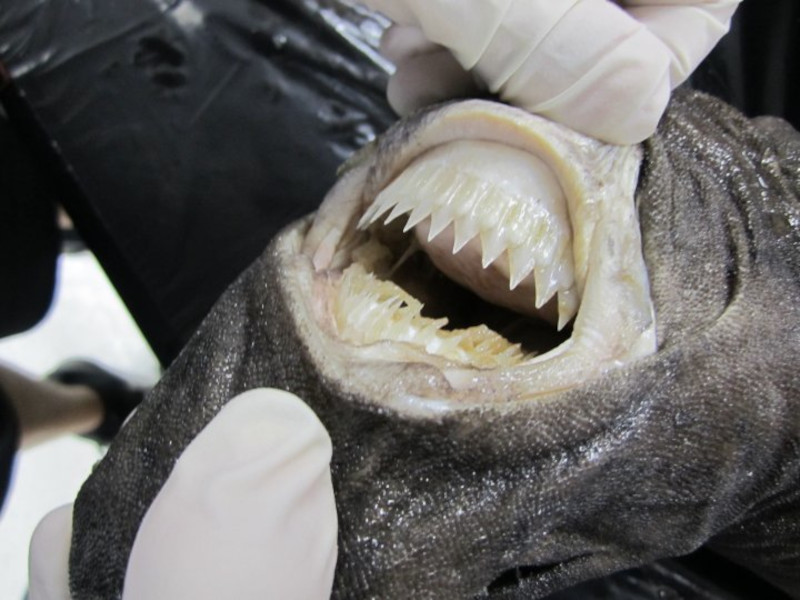Cookiecutter Shark Facts
- The Cookiecutter Shark is a small but quite remarkable variety of dogfish shark, with some unique characteristics.
- The name of this shark comes from its way of feeding. Individuals actually gouge small round plugs of flesh out of the prey. This wound appears as if cut by a cookie cutter, hence the name.
- Due to its wide distribution, the IUCN lists it as a Species of Least Concern. It also has no commercial value to fishermen and thankfully does not seem to be overly susceptible to commercial fishing methods.
Related Articles
Cookiecutter Shark Physical Description
The Cookiecutter Shark remains an extremely small species of shark. The maximum recorded length of any individual was 22 in (56 cm).
It also has an elongated body, with a bulbous snout. The eyes grow rather large and sit more forward than among most types of sharks.
The upper teeth develop small and narrow, and the lower teeth grow rather larger, wider, and knife-like.
This animal is also predominantly a chocolate brown in color. Additionally, the shark also possesses photophores covering most of its underside which create a bright green glow.
- Kingdom: Animalia
- Phylum: Chordata
- Class: Chondrichthyes
- Order: Squaliformes
- Family: Dalatiidae
- Genus: Isistius
- Species: I. brasiliensis
Cookiecutter Shark Distribution, Habitat, and Ecology
Though it lives in all warm waters, the Cookiecutter Shark is most common in waters where the temperature is between 64-79 F (18-26C). In warmer years, this sometimes extends its range as far as California, in the United States, in North America.
Individuals also live as extremely deep dwellers. During the day most are found at depths of as much as 2.3 mi (3.7 km). At night most rise closer to the surface, yet typically remain below 280 ft (85 m). However, some will occasionally rise all the way to the surface.
Attacks on humans are rare but do occur, however. The shark preys upon virtually any creature, although smaller prey it swallows whole. Larger victims suffer the circular wounds from which its common name derives.
Species Sharing Its Range
Check out our other articles on Pearl Shoal Waterfall, Socotra Bluet, Gharial, 7 Stunning European Flowering Plants, Hummingbird Fuschia, Australian Sea Lion, Spotted Cleaner Shrimp

